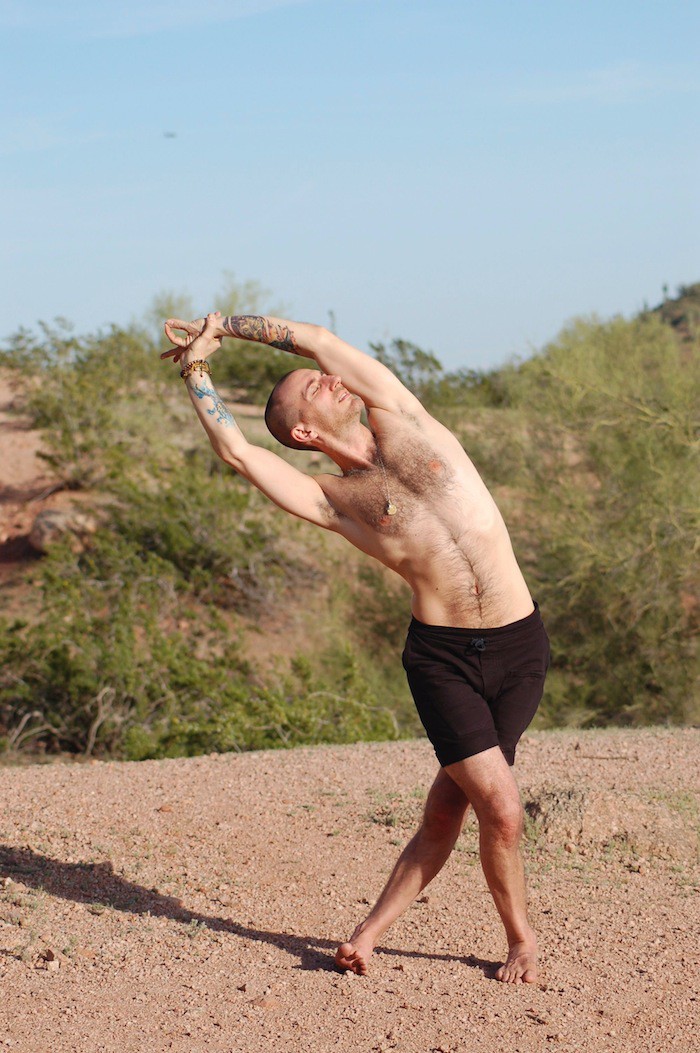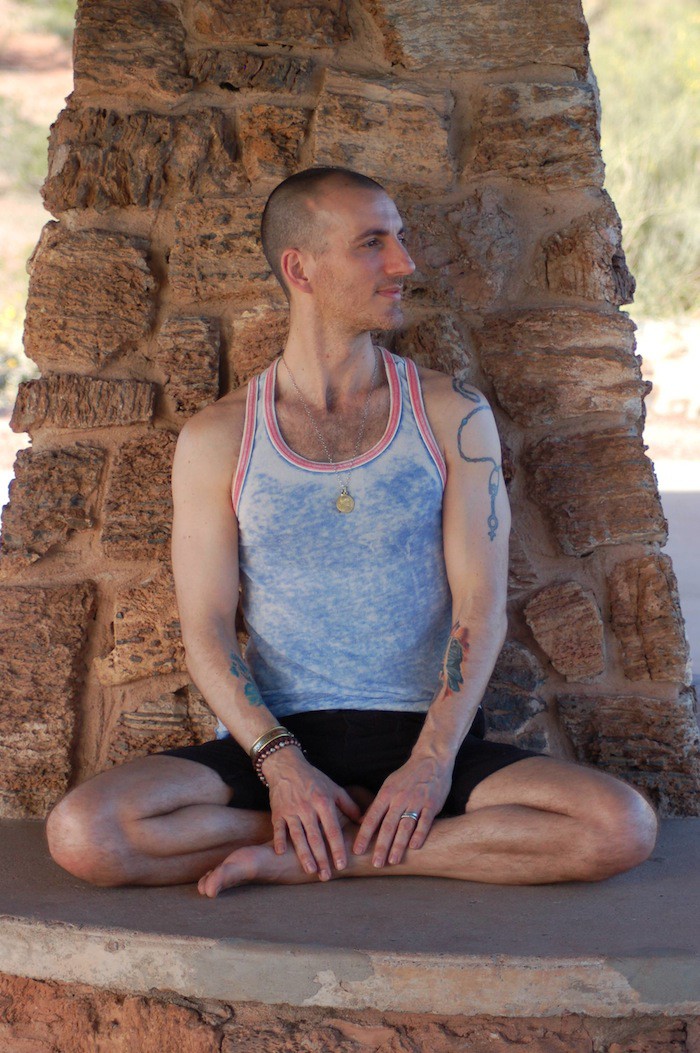How do I Improve My Yoga Practice? Sin.

What’s the harm in striving for perfection? Bad Yogi presents the theory that striving for impeccability can actually impede yogis’ self-growth. “In order to come into the state of yoga—union—we have to move beyond dualistic thinking: good-bad, right-wrong, black-white.
“Those things are a trap,” said author and globetrotting yoga instructor Greg Marzullo, a 500- and 200-hour registered yoga teacher that pulls inspiration from Shiva Rea’s Prana Flow style. Marzullo has also spent two decades examining spiritual traditions including shamanic work with American Indian and Southern Italian healers.
To build this be-bad, be-free case, Marzullo calls on the Puranas—a catalogue of stories of sacred Hindu gods and heroes—and the philosophical text, Bhagavad Gita.
We caught up with Greg Marzullo to learn more about how to be the best bad yogi.

Photo by René Rinaldi
When you reference Western yoga culture does that include Europe?
I primarily come from an American viewpoint. From what I have read about the European yoga culture they latch onto very similar styles and philosophies as ours.
You talk about a puritan-style idealization among Western yogis. Do you think that our religious history has altered yoga in the United States?
Whether individuals adhere to a particular faith or not, our culture and national character is influenced by Puritanism and Judeo-Christian belief systems. As a gay man, that is really clear to me. Marriage being between a man and a woman is biblically based. A Ten Commandments-approach to yoga philosophy—with very clear rights and wrongs—is a dangerous hindrance to many people’s self-actualization. For some people it does work. I’ve seen a lot of people try to wrestle themselves into that mold.
How can yogis acknowledge the full nature of which they are—even their impatience or a fiery temper—and nurture self-actualization?
One part is being honest even to our selves. (We don’t have to be honest to anyone else. If I’m having a fantasy about punching you, nobody wants to hear that.) We don’t need to say, ‘I’m a bad person.’ Self-flagellation is a form of narcissism. Keeping the coals on our selves for the emotion demonizes the emotion and it will eat you.
Paradoxically, we need to acknowledge the emotion; if we bury it, it will come out in other ways. On an individual level, we can nurture ourselves by nurturing all of ourselves.

Photo by René Rinaldi
Not all Western-based yoga embodies a strict binary worldview, right?
Absolutely. As a counter example, there is also often a complete disassociation from the philosophy and spirituality, and it’s just about fitness. The polarity is interesting: What appears as a rigid expression of yoga can take the spirituality—a beneficial doorway into our selves—away. This isn’t the picture of all yoga practitioners everywhere. Everywhere I go in the yoga world, and when I look at yoga media and large yoga retreat centers, there is a focus on perfection. People are trying [detox] cleanses or committing to practices in order to purify themselves.
How can a detox cleanse, or other practices, be self-detrimental?
Spiritually and medicinally, Indian practices such as Ayurveda have to do with cleanliness. We do a lot of foolish things to our bodies, so there are techniques to keeping the system running well. Regardless of practicing yoga, neurosis is prevalent among so many of us. I’ve known many friends and practitioners with beauty, health and body image issues. It concerns me how often and easily I see a conversation about cleanses dovetail with shame issues regarding the body.
It’s a fine line. To say, ‘I went on a red wine bender for two months and I need to pull this shit back together’—we’ve all been there. Then we need to go vegetarian for a week. But people that are living on juice, because they believe that’s going to keep them clean, are wrecking the gift that the body is.
Has capitalism affected yoga’s evolution in the West?
Studio owners need to pay the light bill. At the same time, our capitalist economic society brings pressure into the yoga industry, because it’s based on expendable income. In order to capture that dollar there’s a sense of entertainment. It forces the yoga world to come up with new options—aerial yoga, hula-hoop yoga, circus yoga—that are sometimes ridiculous.
Yoga is boring. I don’t care if you put on tie dyed pants and new music, we’re still doing Triangle Pose over and over. We have to become comfortable with boredom. Even more horrifying, we need to become comfortable with the same thoughts that constantly plague us.
Are any yoga practices in the U.S. closer to the Indian yogic roots than others?
That’s a matter of perspective. Many practices, in my opinion, lean towards the rigid and puritanical. And the founders would say, ‘This is the real yoga,’ and cite sources. I’m not saying I’m right. But, to say that there is an inside sacred track through the original yoga is completely elusory. The Smithsonian Museum’s “Yoga: The Art of Transformation” exhibit demonstrated well that in India itself yoga has gone through incredible changes for hundreds of years. We have ideas of what ancient yoga practitioners were searching for and what they did to augment that search. We don’t have one body of work that we can insolubly lean upon for ‘today’s school of yoga.’
We evolve, and so does yoga.
Learn more at gonataraj.com.


LET'S GET SOCIAL